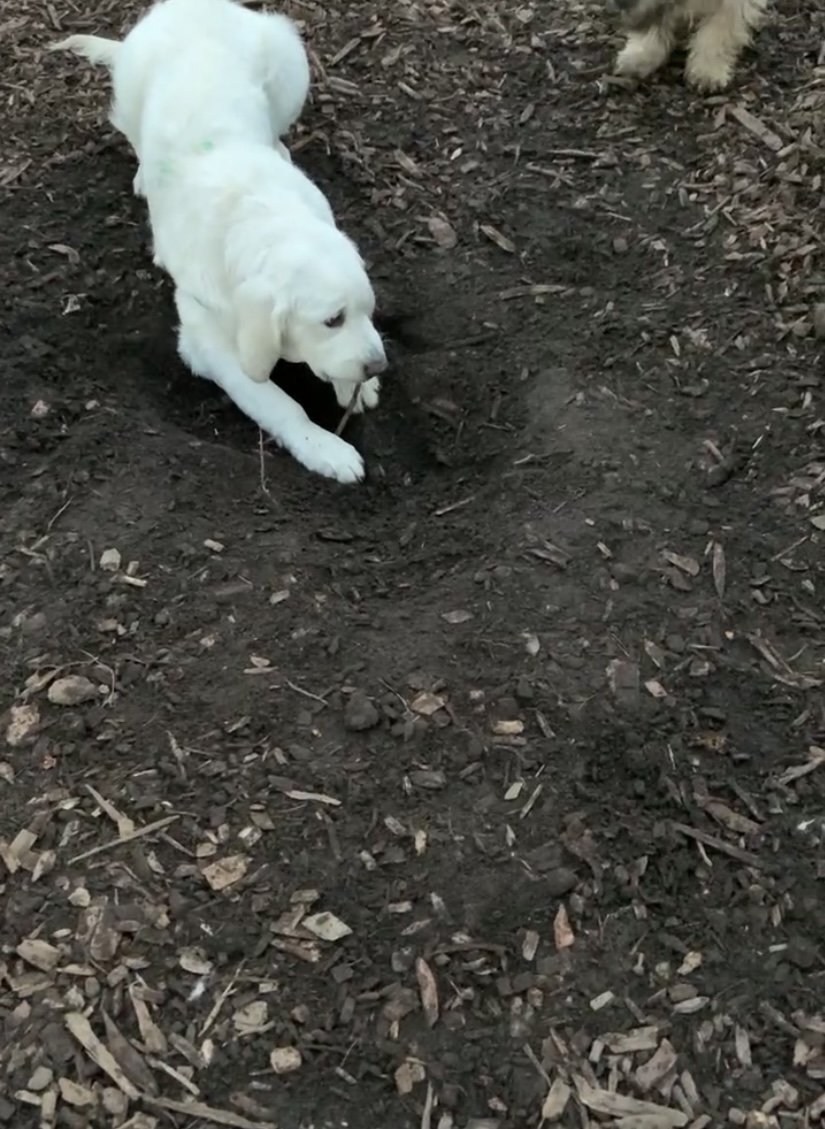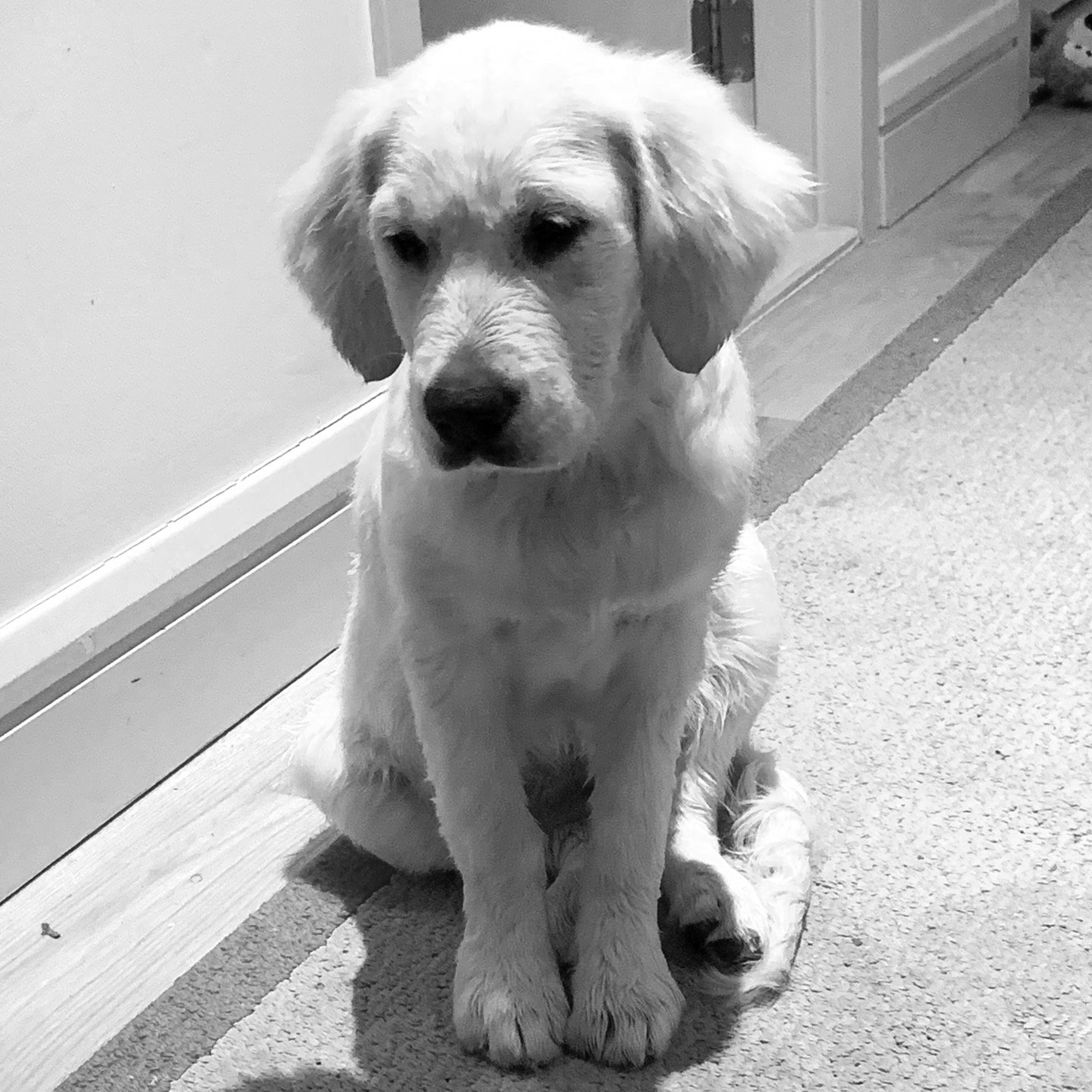I’ll never forget the first time Sweet Baby L showed us her guarding tendencies. She was still very young, about five months. She had been given a knee bone treat to gnaw on, and she couldn’t have been happier.
For the first few minutes, she was minding her own business, happily chewing away. When I reached past her to grab her leash off the floor, her front paws flailed outward, her snout wrinkled up to bare her teeth as she let out an aggressive bark. I yanked my hand back immediately, momentarily stunned and confused.
What had just happened to my sweet, calm, good-natured puppy?
She’s a resource guarder.
What is Resource Guarding in Dogs?
Resource guarding is when a dog or puppy – quite literally – guards a resource. “Guarding” in this context means snarling, growling, snapping or barking at another dog, or in some cases, a human, as a way of keeping them away from a “resource,” i.e. something they don’t want others to have.
Resources can be things like food, toys, treats, their humans, or, in Sweet Baby L’s case, territory. She gets very guardy over holes she digs in the park, and sticks. Lord help any pup that gets too close to her when she’s got a stick she doesn’t want to lose.
What Does Resource Guarding Look Like?
For Sweet Baby L, it looks something like this:

What Causes Resource Guarding in Dogs?
Resource guarding isn’t limited to certain breeds or ages of dogs. It can show up anywhere. I was (pleasantly) surprised to learn that it’s not abnormal behavior. “Guarding food, coveted objects, mates and physical space are highly adaptive traits in a natural environment,” writes Jean Donaldson, in Mine! A Practical Guide to Resource Guarding in Dogs. “If dogs had to fend for themselves tomorrow, guarders would have the survival and reproductive edge over non-guarders.”
Seeking Help for Resource Guarding
I’m not a dog trainer and I definitely don’t pretend to be, but the takeaway from my own experience is that it’s important to work with a professional here. You can’t train a dog to never guard a resource (it’s a thing some dogs do) but there are ways to manage the behavior. I was surprised to learn that one of those options is to actually do nothing about it. That is, if your dog is known to guard his or her food, just leave the pup alone during mealtime.
Handling Resource Guarding: What Has Been Working for Us
My first reaction when Sweet Baby L started resource guarding was that we needed to find a specialized trainer to help us stop the behavior before it got out of hand. Back then, I was under the (mistaken) impression that we could “train” her to not resource guard. LOL.
Here’s another reminder that it’s natural and normal behavior for dogs to guard things that they perceive was valuable. Still, it’s no fun to have to leave the park in disgrace when Sweet Baby L encounters another pup who gets too close to a ball or stick that she seems to think belongs to her and only to her.
While it’s not possible to get her to “stop resource guarding,” her trainer taught us a few invaluable commands to manage the symptoms, so to speak, of her guarding. There are three, and they are meant to work together.
Step 1: “Out!” (aka “Drop it”)
Step 2: “Leave It”
Step 3: “Place”
Used together, Sweet Baby L should spit out whatever she has in her mouth, leave it alone and retreat to her “place.” The goal is to get her to lose interest in whatever she’s guarding redirect her attention elsewhere.
When we are outside, away from her “place,” the first two often work well enough to diffuse tense situations. She’s very good at “out” but will occasionally forget “leave it” which means she will try to snatch whatever the item was again. More often than not, though, she’ll follow our commands as we remove her from the situation. Sometimes that means leaving the park earlier than expected.
